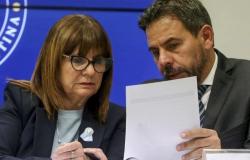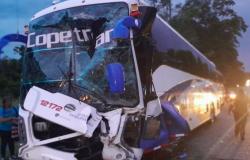The family project of the Agrestis Winery Located in the General Roca farm area, it began in 1992, as a result of an idea from a restless Valletano producer: Norberto Ghirardelli.
32 years have passed since the idea crystallized and grew over time. But today new airs are passing through, since The young blood necessary for the continuity of these productive ventures in North Patagonia was added.
Norberto continues with some work in the winery and continues contributing his ideas, but little by little he becomes convinced that it is time to delegate. And who better than their own children to take charge of an idea that they saw born and grow since they were just children.
But it will be the same promoter of Agrestis who will be in charge of telling his story, that of a winery that he dreamed of and made come true until he reached a privileged place among sparkling wine producers in the region.
“We bought this property with the warehouse that existed, which was abandoned, and we began to reconvert with new vineyards, at that time we imported plants from France because from the beginning this was born as a project to make the product we make,” says Ghirardelli.
“We started planting in 94 and simultaneously we began to recycle the winery a little, which was traditional with concrete basins, we were coating them with epoxy,” recalls the wine producer.
“In ’97 we made the first production, small, there must have been about 1,000 bottles, in ’98 there were 3,000 and in ’99 it was a larger production.”
Norberto Ghirardelli, from Bodega Agrestis.
“I came from another wine business in the Guerrico area where we did not make sparkling wine.“There was some experience with the project of fine wine from cold areas and then sparkling wines from cold areas came out,” says Ghirardelli about his background in the matter.
“At that time The province hired a Mendoza technician “who was called Antolín, who was a reference for sparkling wines in Mendoza, who was training us, I later traveled to France where I was spying and that’s where we started here,” he says about the beginnings of the venture.
“In 97 we made the first production, small, there must have been about 1,000 bottles, In ’98 there were 3,000 and in ’99 it was a larger production since the vineyard produced a little more, it was more on a commercial level,” indicated the producer.
Production and varietals
“On this property we have about 20 hectares, there is a small part with fruit trees and the rest is vineyard,” says Ghirardelli.
“Here we grow five varieties of grapes. “75/80% of what we make are sparkling wines and the remaining 20/25% are still wines.”
He continues: “To make those wines, which we make exclusively with own grapes“We grow two white varieties and three red varieties.” “The white ones with Chardonnay and Gewürztraminer and the reds are Pinot Noir, Malbec and Cabernetwith them we make that small percentage of still wines,” he comments about the productive part of the farm.
“The sparkling wines include Chardonnay, Gewürztraminer and a large part of the Pinot Noir. We use part of the Pinot Noir in white to make a blend with Chardonnay for the champagne and we make the other part in pink to make Pinot Noir rosé sparkling wines,” he says directly about the production stage.
Currently, the winery’s sparkling wine production is made up of the brands Agrestis and Tenuis in the different varietals used for production.
Lack of momentum
The regional wine sector sought to give a greater boost to the activity through the so-called Wine Route. This initiative continues, but it lacks greater execution dynamics, with the contribution of new ideas and people willing to work.
“At the provincial level there was a Secretary of Tourism, who was Ana Boschi, who was the promoter of the food routes, for which he hired an expert and five food routes in the province were designed: the pear and apple route, the wine route, the sheep meat route on the South line, the Andean flavors route and the route of the flavors of the sea,” says Ghirardelli about the initiatives that were implemented for the sector years ago.
“We lack a lot of infrastructure, road problems for example. People arrive by plane to Neuquén and to get here the complications begin.”
Norberto Ghirardelli, from Bodega Agrestis.
“A lot of work was done and of those projects only the wine project came to fruition.“We were able to create a route between the wineries, they gave us legal status and to this day it is the only formally constituted association that exists in the province, referring to viticulture,” the producer clarified.
However, he indicated: “We lack a lot of infrastructure, the problems with the route for example. People arrive by plane to Neuquén and to get here complications begin”.
“There are not many people willing to promote it either because Those who do tourism are dedicated to emissive and not receptive tourism. The fact that the area is not a tourist destination like Bariloche or Mendoza does not suit us,” he concluded.
Generational change, good news
The Agrestis winery Today it has incalculable value in the face of the productive challenges that lie ahead: the generational change.
How is this fundamental step being taken for the continuity of a project of this type? Ghirardelli tells it in detail, since he experiences it firsthand. “When we started this project my children were between 10 and 12 years old, then they went to study. A little influenced by my activity… I think, my daughter, who is the eldest, went to study Tourism and Hospitality and the son went to study Agronomy, two other daughters turned to other fields,” he tells Río Negro Newspaper.
“When they finish studying, they stay in Buenos Aires for a while working there and The first to return is my daughter Florencia. When he told me he was coming back I thought, what is he going to do here, because this is not a tourist destination?”
He told me: “I want to do something related to the winery, wine tourism, and he started organizing some tasting courses, events related to wine talks where he invited someone like Alcides Llorente or Marcelo Miras,” says Ghirardelli.
“This where we are now was a family, weekend barbecue area. Thus he began to develop a complementary business that grew until We decided to make an investment and expand this space to dedicate ourselves fully to that topic.”, he comments on the arrival of the new generation.
“Later Alfredo decided to come back, I was extremely happy because I said here is the replacement, because If one does not manage to have continuity, these projects are lost.”says the producer.
“Luckily he came very enthusiastic, he saw this from a very young age since we planted and made the first bottles, The fact of having studied Agronomy helped with the desire to join the project… and for 7 or 8 years now he has been managing everything.”, he clarified.
As with any change, these new additions were welcome, but there is almost always a but. “Well, there are always clashes…”, says Ghirardelli, who takes the memory with humor although without going into details.
As he says: “Now I am in clear withdrawal but I cannot detach myself from this, I continue going every day, less time but I go. I confess that many times I go thinking to see what they are doing and then you arrive and see that nothing is happening, or that they are doing things better than I did… it is difficult for one, delegating is very difficult.”
“That’s why there are two or three things that I continue to handle,” the producer clarifies.
In addition to handling “almost everything,” Alfredo Ghirardelli is finishing his degree in Oenology, which will allow the winery to have its own professional in the subject. For now, that task falls to a person who knows a lot about the subject, the winemaker and advisor Marcelo Miras.





